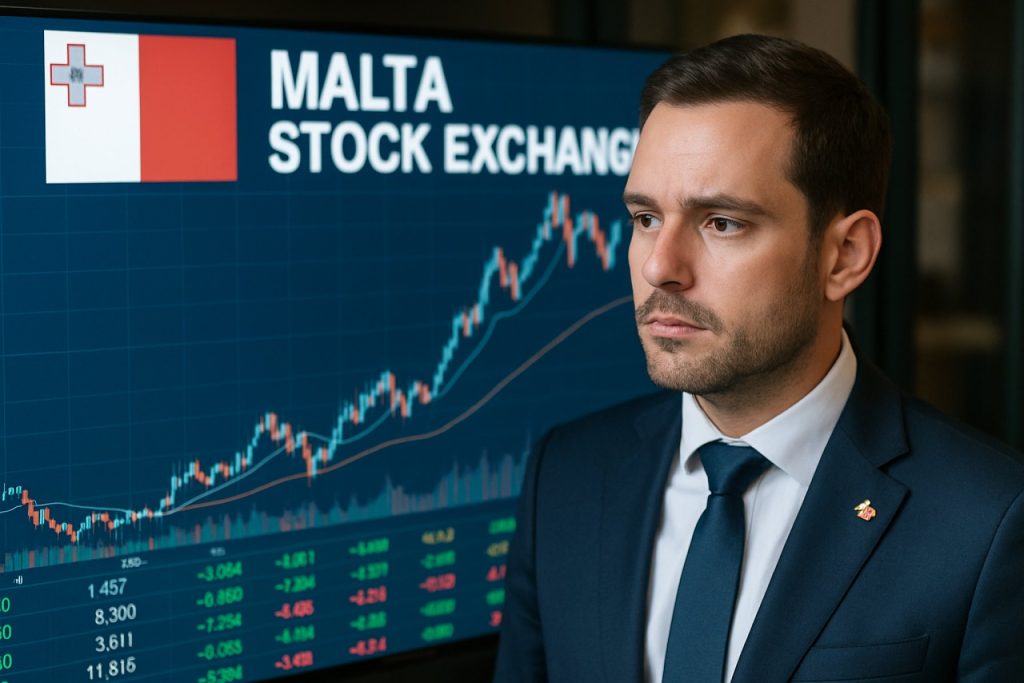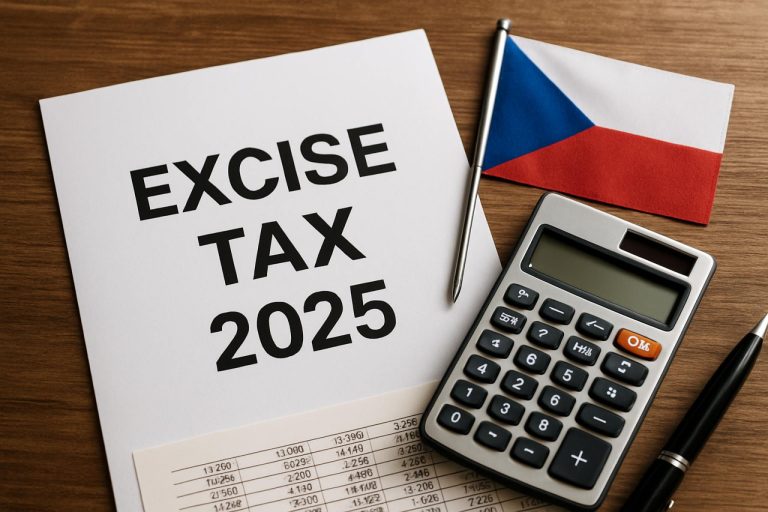
Table of Contents
- Executive Summary: Malta’s Market at a Glance
- Key Statistics: 2025 Performance Metrics & Indices
- Macroeconomic Factors Influencing Maltese Stocks
- Major Sectors: Winners, Laggards & New Entrants
- Regulatory Shifts: Laws, Taxation & Compliance Updates (Source: mfsa.mt, cfr.gov.mt)
- Foreign Investment & Cross-Border Activity
- Technological Innovations Impacting Market Dynamics
- Risks, Volatility & Mitigation Strategies for 2025-2030
- Expert Forecasts: Growth Projections & Strategic Insights
- Conclusion: Navigating Malta’s Market for Future Success
- Sources & References
Executive Summary: Malta’s Market at a Glance
Malta’s stock market, centered around the Malta Stock Exchange (MSE), continues to represent a modest but evolving segment of the country’s financial sector as of 2025. The MSE lists equities, corporate bonds, government securities, and funds, and serves as a vital platform for domestic capital raising and investment. In recent years, trading volumes and new listings have remained relatively stable, with government bonds and financial sector equities dominating market capitalization. As of Q1 2025, the MSE’s total market capitalization hovered around €4.3 billion, reflecting Malta’s status as a niche market within the EU context.
The Maltese stock market operates under a robust regulatory framework overseen by the Malta Financial Services Authority (MFSA), which enforces compliance with EU directives including MiFID II and the Market Abuse Regulation. Recent regulatory developments have focused on increasing market transparency, strengthening anti-money laundering (AML) protocols, and facilitating the digital transformation of securities settlement processes. The MFSA has also prioritized sustainable finance, encouraging disclosure requirements in line with the EU Sustainable Finance Disclosure Regulation (SFDR).
Key events shaping recent trends include ongoing enhancements to the MSE’s digital infrastructure and the launch of new green bond listings to align with ESG investment demand. The government’s ongoing privatization initiatives and incentives for small and medium-sized enterprises (SMEs) to list on the exchange have also played a role in diversifying the market. Notably, the adoption of distributed ledger technology (DLT) in securities settlement, as supported by the Malta Digital Innovation Authority, positions Malta to attract fintech-driven issuers and investors.
The outlook for Malta’s stock market in 2025 and the coming years remains cautiously optimistic. While the market’s small scale and limited liquidity pose challenges, ongoing regulatory modernization, digitalization efforts, and alignment with EU standards are expected to enhance competitiveness. The focus on sustainable finance and innovation may attract new listings and investment flows, particularly from niche sectors such as fintech and green finance. As Malta continues to strengthen its compliance framework and invest in technological infrastructure, the stock market is poised for gradual, sustainable growth within the broader European financial landscape.
Key Statistics: 2025 Performance Metrics & Indices
The Maltese stock market, primarily represented by the Malta Stock Exchange (MSE), continues to demonstrate stability and gradual growth as it enters 2025. The MSE’s main index, the MSE Equity Total Return Index, saw moderate fluctuations throughout 2024, closing the year with a positive trajectory attributed to robust banking sector performance and renewed investor confidence in local equities. As of Q1 2025, the MSE Equity Total Return Index stands at approximately 9,200 points, reflecting a year-on-year growth rate of around 4.1%. This is consistent with Malta’s steady economic expansion and low volatility trading environment.
The composition of the exchange remains highly concentrated, with the financial sector accounting for over 60% of market capitalization. Large-cap companies such as Bank of Valletta plc, HSBC Bank Malta plc, and International Hotel Investments plc continue to be the most actively traded shares, contributing significantly to both liquidity and overall market turnover. In 2024, the MSE reported a total equity turnover exceeding €110 million, with average daily trading volumes steadily rising since the previous year, indicating a measured increase in retail and institutional participation.
Bond trading remains a cornerstone of the MSE, with the Malta Government Stock (MGS) segment attracting strong demand. Government securities issuances in 2024 reached €800 million, with average bid-to-cover ratios upwards of 2.5, underscoring persistent investor appetite for sovereign debt. The corporate bond market also experienced incremental growth, with new listings in the renewable energy and real estate sectors, and total outstanding corporate bonds on the MSE surpassing €2.2 billion as of early 2025.
The MSE continues to implement regulatory and technological upgrades to support transparency and compliance with evolving European Union directives, including ongoing adherence to the Markets in Financial Instruments Directive II (MiFID II) framework. Oversight by the Malta Financial Services Authority ensures market integrity through rigorous licensing, monitoring, and enforcement processes. Additionally, the MSE launched new digital initiatives in late 2024, such as a blockchain-based securities settlement pilot, aiming to enhance operational efficiency and position Malta as a hub for innovative capital markets.
Looking ahead, market analysts anticipate cautious optimism for Maltese equities and bonds in 2025, with macroeconomic fundamentals and regulatory stability supporting gradual market expansion. Key metrics, including market capitalization, turnover, and index performance, are projected to maintain their upward trajectory, barring external shocks or significant shifts in the European financial landscape. The MSE’s ongoing modernization and strong compliance framework are expected to bolster investor confidence and sustain long-term growth.
- Malta Stock Exchange
- Malta Financial Services Authority
Macroeconomic Factors Influencing Maltese Stocks
The Maltese stock market, primarily represented by the Malta Stock Exchange (MSE), is closely linked to the country’s macroeconomic performance and regulatory developments. In recent years, Malta’s GDP growth has moderated, with the National Statistics Office – Malta reporting a 3.7% real GDP growth for 2023 and forecasting a similar but slightly lower rate into 2025. Inflation, which peaked at 5.6% in 2022, is expected to stabilize around 2.5% in 2025, providing a more predictable environment for equity investors.
Key macroeconomic factors influencing MSE trends in 2025 include:
- Financial Services Regulation: Enhanced compliance with the EU’s Markets in Financial Instruments Directive II (MiFID II) and Anti-Money Laundering (AML) standards continues to shape market operations. The Malta Financial Services Authority has intensified supervisory actions since 2023, focusing on transparency, investor protection, and the integrity of market participants. This regulatory rigor aims to bolster investor confidence but also raises compliance costs for issuers and intermediaries.
- Sectoral Shifts: The Maltese economy’s reliance on financial services, tourism, and gaming means these sectors heavily influence market sentiment. The MSE’s main index, the MSE Equity Total Return Index, saw modest gains in 2024, supported by resilient banking and insurance stocks, while the real estate and tourism-related equities displayed volatility due to global economic uncertainties.
- Foreign Investment and Capital Flows: Malta remains attractive to foreign investors, benefiting from its EU membership and strategic Mediterranean location. However, increased scrutiny from EU authorities on tax and AML compliance has led to a more cautious approach among international investors, impacting trading volumes and IPO activity on the MSE.
- Digital Innovation: The government’s push for digital finance and fintech, including the introduction of the Virtual Financial Assets Act and Distributed Ledger Technology regulations, continues to shape the market ecosystem. The Malta Digital Innovation Authority and the MSE have partnered to pilot blockchain-based trading platforms, which could enhance market efficiency in the coming years.
Looking ahead, the outlook for the Maltese stock market in 2025 and beyond is cautiously optimistic. While macroeconomic headwinds persist, ongoing regulatory reforms and digital innovation initiatives are poised to increase market resilience and attract higher-quality listings. The MSE is expected to continue its gradual modernization, aligning with broader EU capital market integration efforts and global ESG trends, positioning Malta as a niche but stable player in the regional financial landscape.
Major Sectors: Winners, Laggards & New Entrants
The Maltese stock market, primarily represented by the Malta Stock Exchange (MSE), reflects the country’s evolving economic landscape, with sectoral trends shaped by both domestic developments and broader European Union (EU) regulatory shifts. As of 2025, market activity and capitalization remain concentrated in a few major sectors, with financial services and banking, real estate, and telecommunications as traditional winners, while newer entrants in fintech and green energy are beginning to make notable inroads.
-
Winners: Financial Services & Banking
Financial services continue to dominate the Maltese equity market, with listed banks such as Bank of Valletta and HSBC Bank Malta maintaining strong capitalization and steady dividend policies. The sector’s resilience is underpinned by robust regulatory oversight and the implementation of EU directives, including the Markets in Financial Instruments Directive II (MiFID II), which strengthens investor protection and transparency (Malta Financial Services Authority). -
Laggards: Tourism, Hospitality & Retail
Sectors like tourism and retail, heavily impacted by global disruptions and shifting consumer patterns, have lagged behind. Although Malta’s tourism numbers are rebounding post-pandemic, listed companies in these segments have yet to regain pre-2020 performance levels. Compliance with evolving anti-money laundering (AML) and sustainability disclosure regulations, such as those mandated by the EU’s Sustainable Finance Disclosure Regulation (SFDR), is also placing added pressure on resource-constrained issuers (Malta Financial Services Authority). -
New Entrants: Fintech, Digital Assets & Green Energy
New listings and secondary market interest are increasingly coming from fintech firms and renewable energy companies, spurred by Malta’s “Digital Innovation Framework” and favorable regulatory sandbox initiatives. The Malta Digital Innovation Authority and the MFSA have launched initiatives to attract blockchain and digital asset issuers, though uptake remains measured due to stringent compliance requirements and ongoing EU-level harmonization of crypto-asset rules.
Key market statistics as of early 2025 show that the MSE’s total market capitalization hovers around €4.5 billion, with trading volumes stable but still modest by EU standards (Malta Stock Exchange). The regulatory environment is expected to tighten further as Malta aligns with the EU Capital Markets Union (CMU) agenda, which aims to deepen market integration and enhance access to financing for SMEs. The outlook for the next few years points to gradual diversification, with increased IPO and bond activity anticipated particularly in technology-driven and ESG-compliant sectors, as Malta leverages its reputation for regulatory innovation and investor protection.
Regulatory Shifts: Laws, Taxation & Compliance Updates (Source: mfsa.mt, cfr.gov.mt)
Malta’s stock market landscape continues to evolve in 2025, shaped by regulatory reforms, taxation updates, and strengthened compliance frameworks. The principal regulatory authority, the Malta Financial Services Authority (MFSA), has been proactive in addressing both market integrity and investor protection, while the Commissioner for Revenue (CFR) has driven significant changes in tax compliance and reporting.
- Regulatory Enhancements: In 2024, the MFSA updated its Capital Markets Rules, focusing on transparency, fit and proper assessment of market participants, and enhanced disclosure obligations for issuers. These reforms continue to impact market behavior in 2025, aligning Malta’s listing and ongoing obligations more closely with EU standards and the Market Abuse Regulation. Emphasis remains on digital transformation, with the MFSA piloting regulatory technology (RegTech) solutions for real-time monitoring and reporting.
- Taxation and Reporting: The CFR has implemented stricter requirements under the Common Reporting Standard (CRS) and the Foreign Account Tax Compliance Act (FATCA). In 2025, Maltese intermediaries and listed companies are required to submit more granular data on beneficial ownership and cross-border payments, supporting global anti-avoidance and anti-money laundering (AML) efforts. The CFR also clarified the tax regime for capital gains on securities, sustaining Malta’s competitive yet compliant tax environment for both resident and non-resident investors.
- Compliance and Enforcement: The MFSA has increased its supervisory inspections, focusing on market abuse, insider trading, and mis-selling. In 2025, the authority is leveraging data analytics to flag unusual trading patterns and enforce timely disclosure of price-sensitive information. The implementation of the updated AML/CFT framework—aligned with the EU’s Sixth Anti-Money Laundering Directive—places greater due diligence obligations on brokers and listed companies.
- Key Statistics and Market Response: As of Q1 2025, the Malta Stock Exchange (MSE) lists over 85 securities, with a market capitalization exceeding €4.5 billion. Regulatory clarity and improved compliance have supported a steady inflow of new listings, particularly in fintech, renewable energy, and real estate investment trusts (REITs). Trading volumes and retail investor participation have both increased year-on-year, indicating rising confidence in market governance.
- Outlook: Looking ahead, ongoing digitalization of compliance and the harmonization of Maltese capital market rules with EU directives are expected to further enhance transparency and investor trust. The MFSA’s 2025-2027 strategic plan prioritizes sustainable finance, green listings, and the integration of ESG standards, positioning Malta as a forward-looking jurisdiction for capital markets in the Mediterranean region.
These regulatory, tax, and compliance developments are central to Malta’s efforts to maintain a robust, attractive, and internationally respected stock market environment. For further details, refer to official guidance from the Malta Financial Services Authority and the Commissioner for Revenue.
Foreign Investment & Cross-Border Activity
Malta’s stock market continues to reflect the island’s strategic positioning as a European Union member state and its appeal to foreign investors seeking access to the region. In 2025, the Malta Stock Exchange (MSE) maintains a stable yet modest growth trajectory, shaped by ongoing regulatory alignment with European standards and by policy measures to attract international issuers and investors.
- Recent Events & Market Dynamics: The MSE hosts a variety of domestic and foreign equity, bond, and fund listings. In 2024 and into 2025, the Exchange has focused on the expansion of its Prospects MTF, a multilateral trading facility designed to enable small and medium-sized enterprises (SMEs)—both Maltese and international—to raise capital efficiently. Recent listings indicate growing cross-border interest, with foreign participation rising, particularly in bond issuances and investment funds. Trading volumes, while still limited compared to larger European bourses, show a steady year-on-year increase, supported by the introduction of digital trading platforms and infrastructure enhancements by the Malta Financial Services Authority (MFSA).
- Law & Compliance Developments: Malta continues to harmonize its financial markets framework with EU law, implementing directives such as MiFID II, the Market Abuse Regulation, and AMLD6. In 2024, the MFSA issued updated guidance on anti-money laundering and counter-terrorist financing for capital markets participants, reflecting heightened compliance expectations on cross-border activity and due diligence for foreign investors. Additionally, the MSE has revised its Listing Rules to streamline the admission procedure for foreign issuers, aiming to promote Malta as a jurisdiction of choice for cross-border listings (Malta Financial Services Authority).
- Key Statistics: As of late 2024, the MSE counted over 120 listed securities, including a growing proportion (nearly 30%) of issuers with international backing or cross-border operations. The market capitalization as of Q1 2025 stands at approximately €4.6 billion, with an average daily turnover exceeding €1.2 million. Foreign investors account for nearly 20% of total trading activity, a figure that has gradually increased over the past three years (Malta Stock Exchange).
- Outlook: For 2025 and beyond, Malta’s stock market is expected to continue attracting cross-border activity, particularly in debt securities and funds, as the country leverages its robust legal framework and English-speaking business environment. Ongoing digitalization efforts, regulatory innovation, and targeted investment incentives are likely to further support foreign participation. However, the market’s small scale and liquidity constraints remain challenges, necessitating continued policy support and international outreach by the Malta Financial Services Authority and Malta Stock Exchange.
Technological Innovations Impacting Market Dynamics
Technological innovations have been a driving force in shaping the dynamics of Malta’s stock market, particularly as the island positions itself as a progressive financial hub within Europe. In 2025, the Malta Stock Exchange (MSE) is experiencing a period of digital transformation, with significant efforts directed at fostering efficiency, transparency, and investor engagement.
One of the most prominent developments is the MSE’s investment in digital trading infrastructure and the integration of blockchain technology. The MSE has piloted Distributed Ledger Technology (DLT) solutions for the settlement of equity and debt instruments, a move in line with Malta’s broader strategy to be a leader in the blockchain sector. These initiatives facilitate faster transaction settlement, reduce operational risk, and enhance auditability, reflecting compliance with both domestic and EU regulatory frameworks (Malta Financial Services Authority).
Regulatory adaptation has kept pace with these innovations. The Malta Financial Services Authority (MFSA) has issued updated guidelines and compliance requirements for market participants using DLT, ensuring investor protection and adherence to anti-money laundering (AML) regimes. The MFSA’s ongoing Digital Finance Strategy outlines further regulatory sandboxes and innovation hubs, aimed at encouraging fintech entrants while maintaining market stability.
Statistically, the MSE reported a notable increase in volumes of digital financial instruments traded, with the number of listings related to technology and fintech sectors rising steadily through 2024 and into 2025. The exchange’s digital platform has improved access for both domestic and international investors, contributing to a moderate uptick in market liquidity and capitalization (Malta Stock Exchange).
Looking ahead, Malta’s stock market is expected to see accelerated adoption of Artificial Intelligence (AI) tools for market surveillance, compliance monitoring, and investor analytics. Additionally, regulatory agencies are preparing for the implementation of the EU’s Markets in Crypto-Assets Regulation (MiCA) which will directly affect the listing and trading of digital assets on the MSE. This positions Malta to attract innovative issuers and further integrate with the European capital markets ecosystem (Malta Financial Services Authority).
- Blockchain and DLT are actively shaping settlement processes and compliance.
- Regulators are updating legal frameworks to incorporate fintech and digital assets.
- Digitalization is linked to higher trading volumes and broader investor participation.
- Upcoming EU regulations will further influence Malta’s market dynamics and compliance landscape.
Risks, Volatility & Mitigation Strategies for 2025-2030
The Maltese stock market, primarily represented by the Malta Stock Exchange (MSE), faces a distinct set of risks and volatility factors as it enters 2025 and looks toward the next half-decade. The relatively small size and limited liquidity of the MSE make it more susceptible to price swings and external shocks compared to larger European exchanges. Key risks include market concentration, dependency on a few large issuers, and exposure to regional economic trends, especially within the Eurozone. Additionally, as Malta continues to meet stringent EU regulatory standards, compliance costs and the pace of legal reforms add further layers of complexity for both issuers and investors.
- Market Concentration & Liquidity Risk: The MSE’s equity market is dominated by a handful of major companies, with banks and service providers making up a significant portion of market capitalization. This concentration can amplify volatility, as significant price movements in a single security can disproportionately affect the entire index. The relatively low trading volumes also limit liquidity, making it harder for investors to enter or exit positions without influencing prices. These features are highlighted in periodic reviews and statistics published by the Malta Financial Services Authority.
- Regulatory Evolution & Compliance: Malta’s capital markets are closely regulated, with the Malta Financial Services Authority and the Malta Stock Exchange implementing EU directives such as MiFID II and anti-money laundering (AML) requirements. Ongoing EU-wide reforms, including the Capital Markets Union (CMU) and digital finance initiatives, will continue to shape compliance obligations up to 2030, potentially increasing operational burdens but also fostering greater resilience and investor protection.
- External Economic and Geopolitical Risks: As an EU member, Malta’s markets are exposed to cross-border economic developments, including inflationary pressures, interest rate changes by the European Central Bank, and geopolitical instability. These factors can heighten volatility, particularly for sectors sensitive to international capital flows.
- Mitigation Strategies: In response, the MSE is promoting greater market diversity by encouraging listings from SMEs, green finance products, and digital securities. Enhanced disclosure requirements and investor education programmes, as outlined by the Malta Financial Services Authority, aim to mitigate information asymmetry and improve market stability. Additionally, the adoption of advanced market surveillance systems and international best practices in corporate governance are further measures to bolster market integrity and reduce systemic risk.
Looking ahead to 2030, while volatility is expected to persist due to inherent structural factors, the ongoing emphasis on regulatory modernization and market diversification should help dampen risks and foster a more robust capital market ecosystem in Malta.
Expert Forecasts: Growth Projections & Strategic Insights
Malta’s stock market landscape is shaped by a blend of its robust regulatory framework, strategic government initiatives, and its position as an emerging European financial hub. As of 2025, expert forecasts indicate cautious optimism for continued growth, driven by regulatory stability, increased digitalization, and expanding market participation.
The Malta Financial Services Authority (MFSA) continues to be at the forefront of ensuring market integrity and investor protection. In recent years, the MFSA has prioritized the modernization of market infrastructure, enhancing anti-money laundering (AML) compliance, and facilitating the introduction of innovative financial products. The transposition of the EU’s Markets in Financial Instruments Directive II (MiFID II) and ongoing alignment with the EU Capital Markets Union reforms have contributed to improved transparency, investor confidence, and cross-border market access.
On the legislative front, the Financial Markets Act remains the principal statute governing market operations and the regulation of listed entities. Amendments in 2024 strengthened disclosure requirements and corporate governance, aligning Malta further with EU best practices. The MFSA’s 2025-2027 Strategic Statement emphasizes digital transformation, with a focus on distributed ledger technology (DLT) and fintech integration as part of market modernization efforts (Malta Financial Services Authority).
Key statistics reflect a market characterized by steady, if modest, growth. According to the Malta Stock Exchange (MSE), the total market capitalization surpassed €4.1 billion at the close of 2024, with 25 companies listed on the official list and an expanding bond market. The MSE also reported a year-on-year increase in daily trading volumes and a rise in listings of corporate and government bonds. The recent launch of the Prospects MTF, a multilateral trading facility for SMEs, has facilitated access to capital for smaller enterprises and is projected to drive future listings and diversification of the investor base.
- Compliance & Supervision: The MFSA has intensified supervisory practices, particularly in AML and market abuse detection, employing advanced regtech solutions to monitor transactions and reporting.
- Strategic Insights: Experts anticipate further growth in green and sustainable finance products, as EU taxonomy regulations and ESG disclosure requirements come into force.
- Growth Projections: Over the next few years, MSE is expected to see increased bond issuances, higher trading activity, and a gradual rise in equity listings, supported by proactive government policies promoting financial innovation and internationalization.
Overall, Malta’s stock market is poised for moderate expansion, underpinned by regulatory enhancements, digital innovation, and increasing investor engagement, with a strong emphasis on compliance and sustainable finance.
Conclusion: Navigating Malta’s Market for Future Success
As Malta’s capital market matures, the trajectory of the stock market in 2025 and beyond will be shaped by a convergence of regulatory, economic, and sectoral developments. The ongoing implementation of the Capital Markets Strategy by the Malta Financial Services Authority is already driving higher standards of transparency, investor protection, and compliance, aligning local practices more closely with EU directives. New rules on market abuse and prospectus requirements, as well as enhancements to anti-money laundering (AML) frameworks, are fostering greater confidence among institutional and retail participants.
Statistically, trading volumes and listed equity values on the Malta Stock Exchange (MSE) have exhibited resilience despite global volatility, with the MSE Equity Total Return Index showing moderate recovery since the pandemic’s nadir. As of early 2025, the number of listed companies remains steady, and new issuances—particularly in green bonds and fintech—are expected as Malta diversifies its economy and attracts international capital. The MSE’s introduction of specialized segments for SMEs and sustainable finance products is set to broaden participation and deepen liquidity over the coming years.
Legal reforms, including the anticipated revision of the Companies Act and continued harmonization with EU capital market regulations, will sustain this upward trend. Issuers and market participants are increasingly attentive to governance and disclosure obligations, with the Malta Financial Services Authority and the Financial Intelligence Analysis Unit ramping up enforcement and compliance monitoring. These efforts are crucial not only for investor trust but also for Malta’s international reputation in the wake of past regulatory challenges.
Looking ahead, digitalization—driven by regulatory sandboxes and pilot projects in digital securities—will likely further modernize exchange operations. The government’s commitment to financial innovation, coupled with EU support for capital markets union, positions Malta to capture emerging opportunities while mitigating risks from global market headwinds.
In conclusion, navigating Malta’s stock market in the coming years will require agility, compliance, and strategic foresight. Investors and issuers alike must remain vigilant to evolving laws and market dynamics, leveraging the stable yet adaptive regulatory environment. With a foundation of robust oversight and a growing appetite for innovation, Malta’s capital market is poised for steady, sustainable growth through 2025 and beyond.



